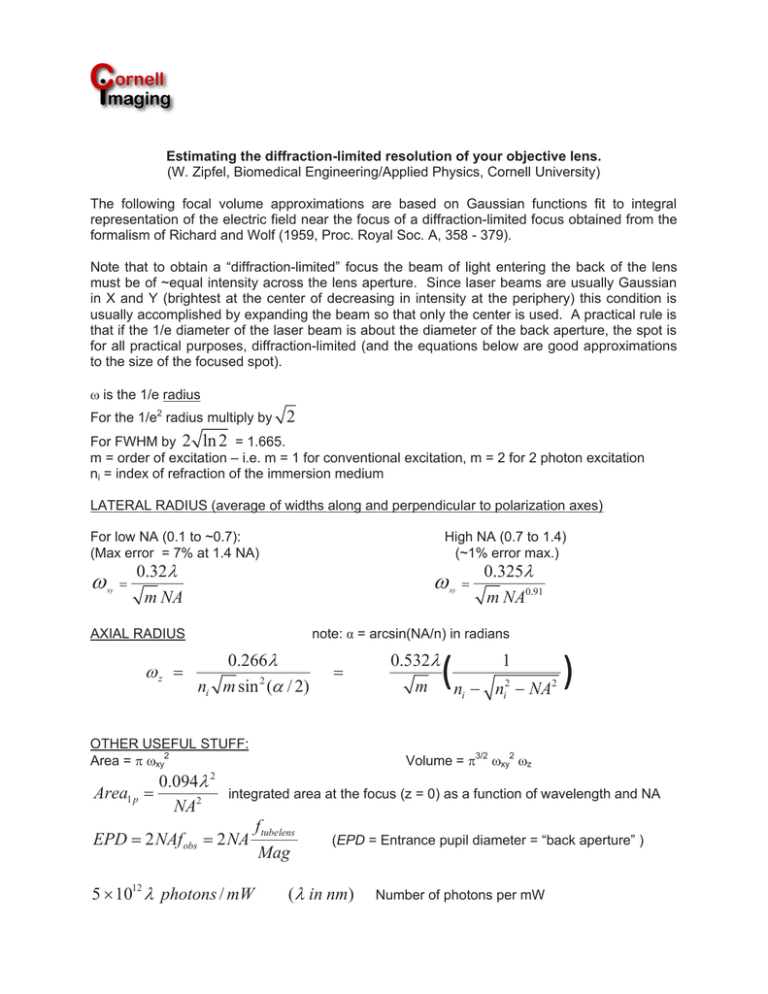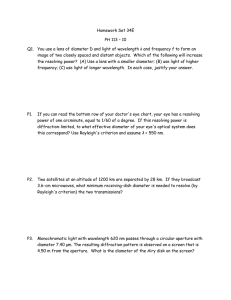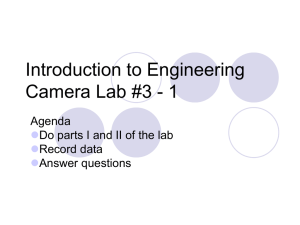ω = ω = - Cornell University
advertisement

Estimating the diffraction-limited resolution of your objective lens. (W. Zipfel, Biomedical Engineering/Applied Physics, Cornell University) The following focal volume approximations are based on Gaussian functions fit to integral representation of the electric field near the focus of a diffraction-limited focus obtained from the formalism of Richard and Wolf (1959, Proc. Royal Soc. A, 358 - 379). Note that to obtain a “diffraction-limited” focus the beam of light entering the back of the lens must be of ~equal intensity across the lens aperture. Since laser beams are usually Gaussian in X and Y (brightest at the center of decreasing in intensity at the periphery) this condition is usually accomplished by expanding the beam so that only the center is used. A practical rule is that if the 1/e diameter of the laser beam is about the diameter of the back aperture, the spot is for all practical purposes, diffraction-limited (and the equations below are good approximations to the size of the focused spot). ω is the 1/e radius For the 1/e2 radius multiply by 2 For FWHM by 2 ln 2 = 1.665. m = order of excitation – i.e. m = 1 for conventional excitation, m = 2 for 2 photon excitation ni = index of refraction of the immersion medium LATERAL RADIUS (average of widths along and perpendicular to polarization axes) For low NA (0.1 to ~0.7): (Max error = 7% at 1.4 NA) ω xy = High NA (0.7 to 1.4) (~1% error max.) 0.32λ m NA ω = 0.325λ m NA0.91 note: α = arcsin(NA/n) in radians AXIAL RADIUS ωz = xy 0.266λ ni m sin 2 (α / 2) = OTHER USEFUL STUFF: Area = π ωxy2 0.094λ 2 Area1 p = NA2 ( 0.532λ 1 m ni − ni2 − NA2 ) Volume = π3/2 ωxy2 ωz integrated area at the focus (z = 0) as a function of wavelength and NA EPD = 2 NAf obs = 2 NA 5 × 1012 λ photons / mW f tubelens Mag (EPD = Entrance pupil diameter = “back aperture” ) (λ in nm) Number of photons per mW




